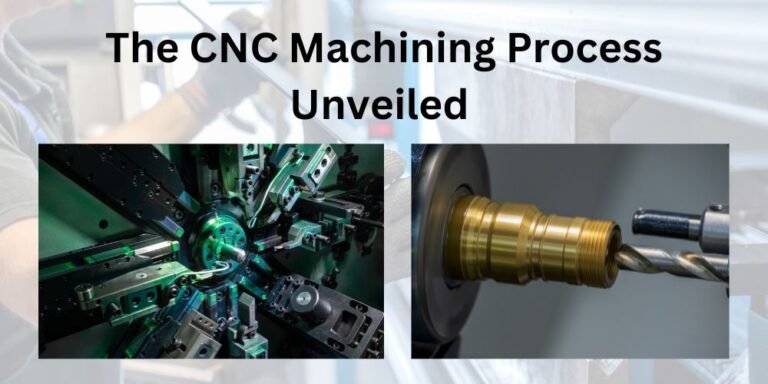In the world of precision manufacturing, the CNC machining process stands out to be at the pinnacle of innovation that transforms the digital designs into tangible realities.
The CNC Machining Process from Design to Reality
Starting from intricate components to all the industrial prototypes, understanding the journey from design to reality in CNC machined components unveils a process of precision along with efficiency.
The Design Phase: Blueprinting Perfection
The journey starts with a diligent design phase. All the Engineers and designers engage Computer-Aided Design (CAD) software to create a virtual blueprint of the desired component required. This digital model then serves as the foundation or the starting point in defining every contour, dimension, as well as the intricate detail with utmost accuracy.
Materials Selection: Crafting the Foundation
Now that the digital blueprint is ready and perfected, the next crucial step is material selection for bringing it to reality. The choice of material, be it plastic, or metal or composites, also play a vital role in the component’s performance and its durability. CNC machining serve a diverse range of materials that allows flexibility and customization which is based on the intended application.
Toolpath Generation: Plotting the Course
While the design and materials are in place, the CNC machine now needs instructions on how to bring the pre-planned digital blueprint to reality. This is where the toolpath generation comes into action. CAM (Computer-Aided Manufacturing) software now analyzes the digital model and then generates a set of instructions for the CNC machine to follow. These instructions direct the accurate movements of the all the cutting tools and ensures precise material removal.
CNC Machine Setup: Precision in Every Detail
Before the machining process begins, the CNC machine must be set up diligently. This involves not only securing the raw material in the machine, but also installing the required cutting tools, along with calibrating the machine for optimal accuracy. This setup phase is critical, as any deviations can highly impact the final product’s quality.
Machining Execution: Sculpting Perfection
Now that the CNC machine is set up, the actual machining process commences. The machine interprets the generated toolpaths and executes a series of accurate movements. Starting from cutting tools, guided by these instructions to sculpting the raw materials with unparalleled accuracy, it performs the complete activity. The deductive manufacturing process slowly transforms the raw material into the desired component, layer by layer as directed while programming the process.
Quality Control: Ensuring Precision
Now quality control is integrated throughout the above machining process where advanced sensors and measurement tools monitor these component’s dimensions and surface finish in real-time. And any deviations from the specified tolerances trigger adjustments thus ensuring that the final product sticks to the exact design specifications.
Post-Processing: Finishing Touches
While the CNC machine achieves remarkable accuracy and design, post-processing steps are often operated to add finishing touches. This may involve additional machining the final product for intricate details, its surface treatments like polishing or coating, and final inspections to guarantee flawless functionality and aesthetics.
Conclusion: Precision Realized
The CNC machining process is a complete journey from design to reality marked by accuracy at every stage. From the setting up the digital blueprint to the final post-processed component, CNC machining exhibits the synergy of advanced technology, diligent planning, and skilled craftsmanship. Eventually, this seamless transitions from the virtual to the tangible product by positioning CNC machining as a cornerstone in modern manufacturing. This brings forth a new era of possibilities in creating components that meet the highest quality standards precision and accuracy.

